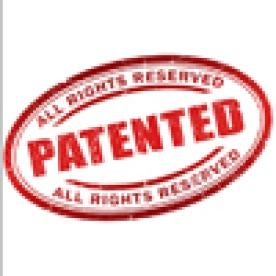Takeaway: The Board is careful not to import limitations from the specification.
In its Final Written Decision, the Board determined that Petitioner had demonstrated by a preponderance of the evidence that claims 1-19 of the ’237 patent were unpatentable. The ’237 patent relates to tournament play having a qualifying round and a playoff round where the qualifying round is played between a player through a computer terminal and a host computer, while the playoff round is played with all players playing simultaneously within a specific time frame. The Board found that Petitioner demonstrated by a preponderance of the evidence that claims 1-3, 5, and 8-19 are anticipated under 35 U.S.C. § 102 by Walker, and claims 4, 6, and 7 would have been obvious under 35 U.S.C. § 103 over Walker.
The Board began its analysis with the level of skill of person in the art. Experts for Petitioner and Patent Owner disagreed on the level of skill of a person in the art at the time of the invention. However, the Board determined that it was not necessary to resolve the dispute to reach a determination on the merits.
The Board then turned to claim interpretation. The Board determined interpretations for five terms. The first, “playing a game of skill in a qualifying round between a single player and the host computer,” was interpreted in its decision on institution to mean playing a game of skill in a qualifying round, where the game includes only one human player and is at least administered by a host computer. Patent Owner argued that the term should be interpreted to require both the single player and host computer to play the game in competition with each other, such that its interpretation would exclude single-player games of skill. The Board was not persuaded to modify its original interpretation. The Board noted that the parties agreed that “between” means “by the common action of jointly engaging,” but agreed with Petitioner that this definition of “between” includes cooperation, and not just competition urged by Patent Owner.
The Board also maintained its interpretation of the second term from its decision on institution. However, the third term was not interpreted in its decision on institution. However, it was determined that the term “evaluating the results of said qualifying round” was germane to its patentability determination. Petitioner argued that the claim language itself did not explain how the evaluating is performed. Patent Owner argued that the disputed language means evaluating a single player “into predetermined, absolute performance levels independent of their performance relative to others in the qualifying round.” However, the Board found that there is nothing in the claim language to limit the term in this way, and that the term includes evaluating steps based on multiple performances or on absolute evaluation of a single player’s performance. Patent Owner tried to rely on examples for limiting the claim terms, but the Board declined to read limitations from the specification into the claims. Thus, the Board concluded that the term should be interpreted to mean that the evaluating steps may be based on multiple performances of multiple players or on the absolute evaluation of a single player’s performance.
The fourth term, “performance level award increases as a player qualifies for higher performance level classifications,” was also interpreted for the first time in the final written decision. The claims themselves did not specify when the performance level classification is determined. It could be during, or after the players had played the qualifying round. Patent Owner argued that “as a player qualifies” means that the determination is performed while the player is playing the game of skill. However, the Board determined that the specification supports the construction that the performance level classification may be determined after the player has played the qualifying round, and thus disagreed with Patent Owner’s interpretation. The Board maintained its interpretation of the fifth term from the decision on institution since neither party contested it.
The Board then turned to the anticipation and obviousness grounds of unpatentability. All of Patent Owner’s arguments against the anticipation and obviousness grounds were based on the claim interpretations that the Board declined to adopt, and the Board was persuaded that Petitioner had demonstrated by a preponderance of the evidence that the claims were anticipated or obvious.
Finally, the Board dismissed Patent Owner’s motion to exclude certain exhibits that Petitioner relied on to show alleged inconsistent positions taken by Patent Owner in connection with its proposed claim interpretations. The Board dismissed the motion, because the Board did not need to consider such arguments or evidence in making its determination on patentability of the claims.
Game Show Network, LLC and WorldWinner.com, Inc. v. Stephenson, IPR2013-00289
Paper 51: Final Written Decision
Dated: November 7, 2014
Patent 6,174,237
Before: Sally C. Medley, Kevin F. Turner, and Benjamin M. Wood
Written by: Medley



 i
i


